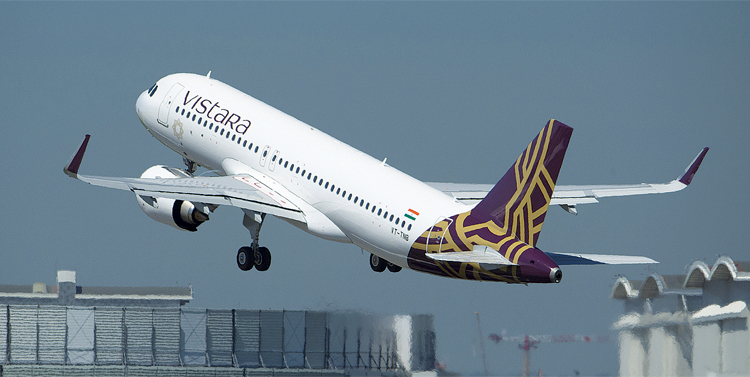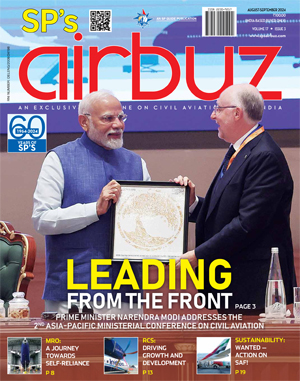Air India Inching Towards Consolidation
Air India commences process to merge AirAsia India with Air India Express by end-2023

Air India has signed agreements to complete the acquisition of 100 per cent shareholding in AirAsia India and to subsidiarise it under Air India. “An operational review process is underway with a view to ultimately integrating AirAsia India (AAI) fully with Air India Express (AIXL). Consolidation of these two airlines, both of which operate as low cost carriers, will be undertaken as part of the restructuring roadmap that is being envisioned for the Tata group’s airline business and is expected to bring customer, revenue, cost and operational benefits through broader adoption of each airlines’ best practices, systems and routes, and the combined entity’s greater scale,” stated Air India. Tata Sons had bought Air India through its wholly-owned subsidiary Talace in a deal of 18,000 crore in equity and debt. AirAsia India was set up in 2014 as a joint venture between Tata Sons and Malaysia-based AirAsia Berhad. Air India and AirAsia India have a combined domestic market share of 13 per cent.
In June this year, Competition Commission of India (CCI) had approved acquisition of the entire shareholding in AirAsia India by Air India. “The proposed combination envisages the acquisition of the entire equity share capital of AirAsia India by Air India Ltd (AIL), an indirect wholly owned subsidiary of Tata Sons Private Limited (TSPL). The latter currently holds 83.67 per cent of the equity share capital of AirAsia India,” CCI said in a press statement. The nod came about six months after the government transferred the ownership of Air India and Air India Express to Tata Sons. The proposed combination envisaged the acquisition of the entire equity share capital of AirAsia India by Air India Limited (AIL), an indirect wholly owned subsidiary of TSPL (Tata Steel Long Products). AIL, along with its wholly-owned subsidiary, (AIXL), is primarily engaged in the business of providing (a) domestic scheduled air passenger transport service, (b) international scheduled air passenger transport service, (c) air cargo transport services in India, and (d) charter flight services in India.
The AirAsia merger, likely by the end of 2023, will lead to a single low-cost carrier for the Air India group. Anticipations for consolidation with Vistara under Air India have also been making the rounds. Discussions are said to be going on with Singapore Airlines (SIA), Tata’s joint venture partner in Vistara. This consolidation could allow Air India to be the second largest airline in the country in terms of fleet and market share. Additionally, this would let Air India streamline its resources and focus on building a qualitative experience and rise above the rest in the market. The Tata group is then expected to have a low-cost carrier and a fullservice airline under Air India. The Indian aviation industry is at the cusp of transformation with more players in the market and more consolidations are also likely. With a lofty goal of 30 per cent domestic market share for Air India in five years, and changing dynamics of the industry, more competition is expected.

Commenting on the AirAsia merger development, Campbell Wilson, CEO & MD, Air India said, “We are excited to initiate the creation of a single Air India Group low-cost carrier. This is a key step in the rationalisation and transformation of the group, and we will be working closely with the management teams and staff throughout the process. We also look forward to the many new opportunities a stronger AI Group low-cost carrier will bring for customers and staff alike.”
A working group has been formed to evaluate and execute the integration of the AI Group’s low-cost operations, which will be co-led by Sunil Bhaskaran, CEO & MD, AirAsia India and Aloke Singh, CEO, Air India Express. The working group will report to a committee chaired by Air India MD & CEO, Campbell Wilson. The assessment and implementation of the full integration process of AAI and AIXL, through a possible scheme of merger or otherwise and subject to necessary corporate approvals, is expected to take approximately 12 months, with network and other synergies to be realised progressively during that period.
Air India is also looking at expanding its fleet to increase the capacity in domestic and international networks and establish a digitalisation process for many of its departments for seamless operations. Air India’s domestic market share has also seen fluctuations, going down from 10.2 per cent in January to 7.2 per cent in May, but again up to 9.2 per cent in September. Its on-time performance has seen some significant progress. Air India has a network across USA, Canada, United Kingdom, Europe, Far-East & South-East Asia, Australia and the Gulf. The airline also has an extensive domestic network connecting over 55 cities in the country through its fleet of narrow and wide bodied aircraft. Air India has been a member of Star Alliance, the largest global airline consortium, since July, 2014. Additionally, Air India Express, launched in 2005, is India’s first international budget carrier and a wholly owned subsidiary of Air India. It mainly collects smaller Indian towns directly to the Gulf and South East Asia regions with its fleet of 24 aircraft.
While AirAsia India for now operates a fleet of 29 aircraft and flies over 50 direct and 100 connecting routes across the country. From logistics to service, quality to smooth processing, fleet to staff, there is a lot that the Tata Group has to work on to get Air India to its reputation. The next few months will be an important test for Tata’s Air India.
On those lines, Air India had revealed a multi-stage transformation roadmap – a plan called Vihaan.AI, which signifies the dawn of a new era in Sanskrit. Vihaan.AI will focus on five key pillars - Exceptional customer experience; Robust operations; Industry-best talent; Industry leadership; Commercial efficiency and profitability.
Air India had identified key objectives and given itself five years to achieve them in a phased manner. The primary milestones to hit include “growing both its network and fleet, developing a completely revamped customer proposition, improving reliability and on-time performance, and taking a leadership position in technology, sustainability, and innovation, while aggressively investing behind the best industry talent.” It is now to see how they are able to implement the plan.





